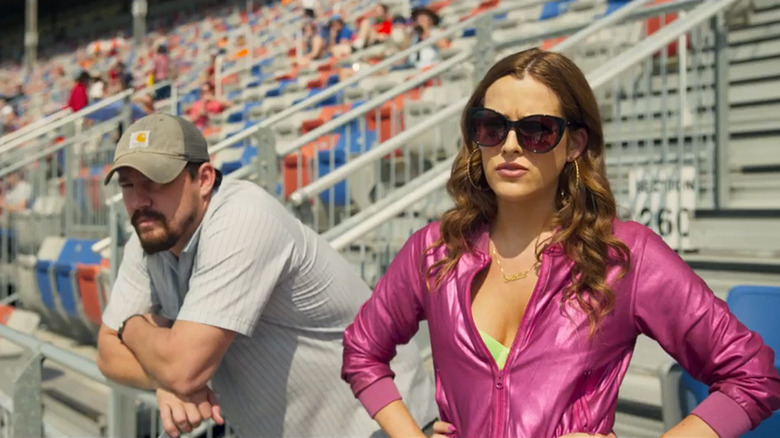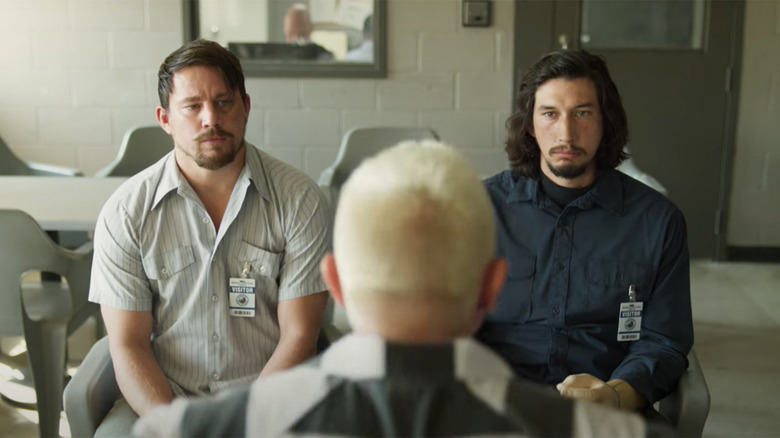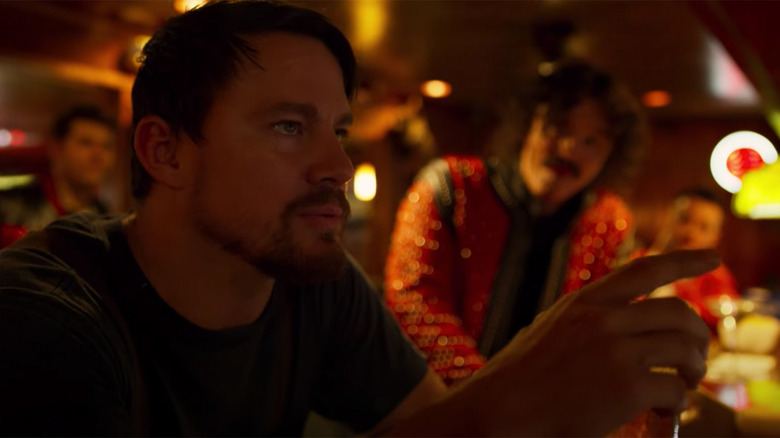How A 'Happy Accident' Led To Logan Lucky's Signature Look
Steven Soderbergh is not your typical filmmaker. He's a true renaissance man, known as much for his ability to pivot to different genres at will as he is for his dexterity in film. Soderbergh has directed, photographed, and even edited most of his films himself, often under various pseudonyms, and his distinct vision has put him on the map in a big way, especially when it comes to his underrated (but no less impactful) cinematography.
Soderbergh's style is partially defined by his use of color. His films are known for their monochromatic shots that jump back and forth across the spectrum of saturation. In most cases, he builds his shots around one or two color families that help denote setting, time, or mood, and represents those colors either in full force (with entire scenes washed through in red or blue) or with careful restraint against grey-toned backdrops.
But his 2017 film "Logan Lucky" — the project that brought him out of his self-imposed sabbatical — is a bit different. Soderbergh himself described the film as a total "inversion" of the work that put him on the map. "The landscape, the characters, and the canvas were the complete opposite of an 'Ocean's' film," he told Entertainment Weekly. And yes, the film follows the titular Logan family (Channing Tatum, Adam Driver and Riley Keough, respectively) on a quest to rob a NASCAR race with the help of a platinum blond, Southern-drawled Daniel Craig. That's a far cry from the smooth, swanky snark of "Ocean's 11" and the sequels that followed.
But it's that aforementioned canvas that really sets "Logan Lucky" apart from the Soderbergh we've seen before — and as deliberate as that pivot seems, the directer can't take all the credit. In fact, he'd rather call it a "happy accident."
The Soderbergh touch
"Logan Lucky" is quite the departure in terms of look alone. Rather than limit his scenes to one or two colors at most, Soderbergh's Heartland heist is a technicolor dream. The filmmaker uses every color at his disposal to build his farcical Americana, and it works beautifully. Punchy neons and icy hues draw the eye where the director wills, though he's not afraid to tone down on the color when necessary. In fact, that's what makes the drab-by-comparison prison sequences in the film so effective. It all works to the advantage of the story — and with Soderbergh holding it down as director, cinematographer and editor, one would think this shift was his idea from the very beginning.
Ironically, such saturation in the film was completely unintentional — at least at first. Soderbergh has his software to thank for the push. The filmmaker experimented quite a bit with "Logan Lucky," both in the distribution model that flouted the marketing techniques that major studios employ, and when it came to editing and archiving footage. Soderbergh told Film Comment that, because of their "forward-looking" techniques, the team ended up "working in a different color space" entirely. He continued:
"One of the many layers of experimentation of this project involved some things in postproduction that are sort of forward-looking in terms of how we are going to archive things. So we ended up in a color space that, when converted to the color space you use for projection, did some really interesting things that I hadn't seen before."
'A giant candy store'
Those "really interesting things" involved the hyper-saturated pops of color we see throughout the film now, though Soderbergh made the choice to lean into the style and hone it to his liking. "Initially there was some alarm from people on the post crew," he recalled. "And everyone was asking, 'Do you want to desaturate that?'" But the director opted to stick with it.
"I thought it looked great because certain colors were really exploding," Soderbergh explained. "It was a happy accident, and instead of backing off, I said let's push it even further."
To some involved, pushing the palette seemed like a risk. Not even Soderbergh was sure it would pay off in the end, but one of the film's many bar scenes (pictured above) and the neon motifs therein, convinced him to give it a try. Ultimately, of course, "Logan Lucky" looks gorgeous. Soderbergh thinks so too. "I thought this movie is just a giant candy store, and everybody likes candy."


